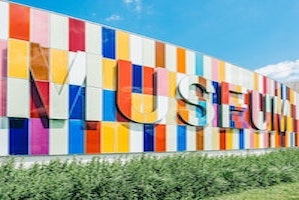 |

|
A clever bit of visual juxtaposition. Yes…? Anyone…?
(Photos by Scott Web https://unsplash.com/photos/ab80p262fFM and Ilya Pavlov https://unsplash.com/photos/OqtafYT5kTw )
HIST4916a Museums and Digital History
How do museums and other organizations in the ‘GLAM’ sector (galleries, libraries, archives, museums) keep track of their collections? To what purpose? What might happen if we release these collections into the wild (via the internet)? If we mash these collections together what might we see, and why might it matter? Where are the dangers - and to whom could it be dangerous?
What is Cultural Heritage Informatics?
The intersection of digital history and museums might be found within the broader field of ‘cultural heritage informatics’. Cultural heritage materials require careful description and organization to permit effective curation, preservation, management, and research. You may have heard the term ‘bioinformatics’ before; that field defines itself as
‘the interdisciplinary field that studies and pursues the effective uses of biomedical data, information, and knowledge for scientific inquiry, problem solving and decision making, motivated by efforts to improve human health.’ (Kulikowski et al 2012)
…in which case, we could define CHI similarly as an interdisciplinary field studying and pursuing the effective use of cultural heritage data, information, and knowledge for humanistic or scientific inquiry, problem solving, and decision making, motivated by efforts to improve human welfare. I added the emphasis there to make an important point. The decisions we make about information are necessarily ethical decisions. Computers operate by replicating the decisions we make, at enormous speed and scale. The consequences can be unintended and unforeseen, and so we have to begin from an ethical perspective that considers from the outset: who will this harm?
This course is not as tech heavy as some of my other classes. Nevertheless, you will be exposed to several platforms, techs, and approaches that you may not have experienced before. The key is to be open and willing to talk about when things don’t go as expected.
You will read, watch, listen to, and discuss the class materials via various online tools including Hypothes.is and Github (Speaking of Hypothes.is, highlight a word on this page and see what happens). We do not use cuLearn in the course. We work on the open web instead. What is challenging for one student will not necessarily be challenging for another, and I expect you to push yourself and pull others along as you go. Thus open and honest reporting of what works and what hasn’t worked, is a meaningful aspect of this course. Again: You don’t need to be techy to succeed, but you do need to be willing to embrace when things go ‘wrong’.
It’s going to be uncomfortable. There will be things we try here that will not work. That’s why the assessment for this course is built around the process, not the final product.
Text/Tech
To the best of my ability, all materials will either be open access materials on the web or materials made available to us through MacOdrum Library or the University. You will not be required to purchase any set text or software.
Having a reasonably up-to-date computer will make life easier for you; if you use a chromebook or a low-powered laptop (eg, less than 8 gb of RAM), this will require us to think creatively about some of the work, but should not present an insurmountable obstacle. A good internet connection will make life easier, but I realize that not everyone is well-served by our tech oligopolies. Please let me know if these situations apply to you so that we can work out a suitable plan of action.
Class format
This class will be delivered online, asynchronously. A Discord server will be used to provide a social context to our work, for help, and for collaboration. Learning materials will be curated on this open course website, and might include a variety of modalities. There will be no required synchronous chats or lectures. There might be optional ones. Students will maintain various materials on the web via Github (your Github account may be anonymous or pseudonymous or made private provided access is shared with me).
Why?
I’ve taught online for a variety of institutions, using a variety of formats and approaches. I like teaching asynchronously because I believe it is a kinder approach to complex topics, especially when there is a second layer of difficulty - basic digital literacy, in this case - which intersects with the content, my learning goals for you, your own personal situations - in ways I cannot always anticipate or know.
Since I cannot know these things, I do not believe that I should bludgeon you with content; I do not think that ‘rigour’ is demonstrated by forcing you to join me at set times; I do not believe that face-to-face work is somehow more ‘scholarly’ than other kinds of work. Right now, with the world the way it is, I want to build a structure that opens possibility space for you to engage with this topic, and with CHI when you encounter it beyond this course, in ways that will push you forward as a scholar and citizen.
For this to work well, it requires you to be on the same page as me. There is a lot of flexibility built into this course, but it does require you to try to push yourself out of your comfort zone. The key thing is always to tie what you’re doing with what you’re reading and what you’re thinking. That ‘second layer of difficulty’ will come with practice. But how it intersects with everything else: that’s where the learning happens.
…and that is why this course is the way it is. No doubt, things will break, and some things will work better/be more effective than others. We will roll with it.